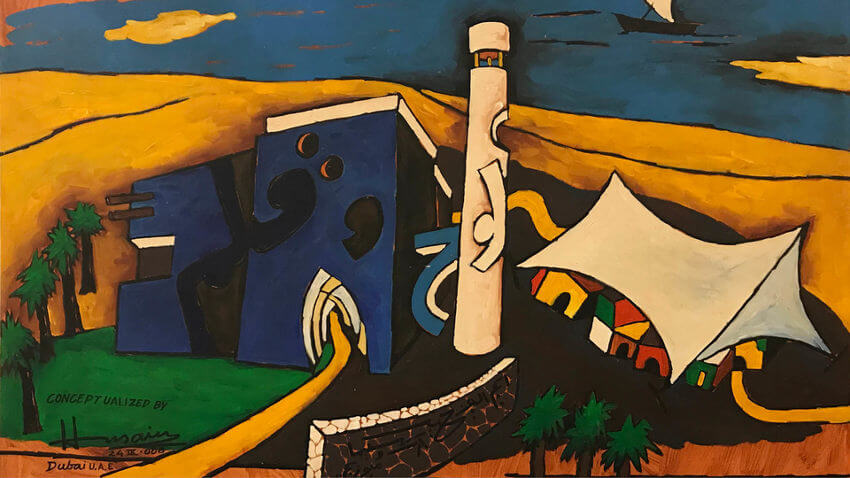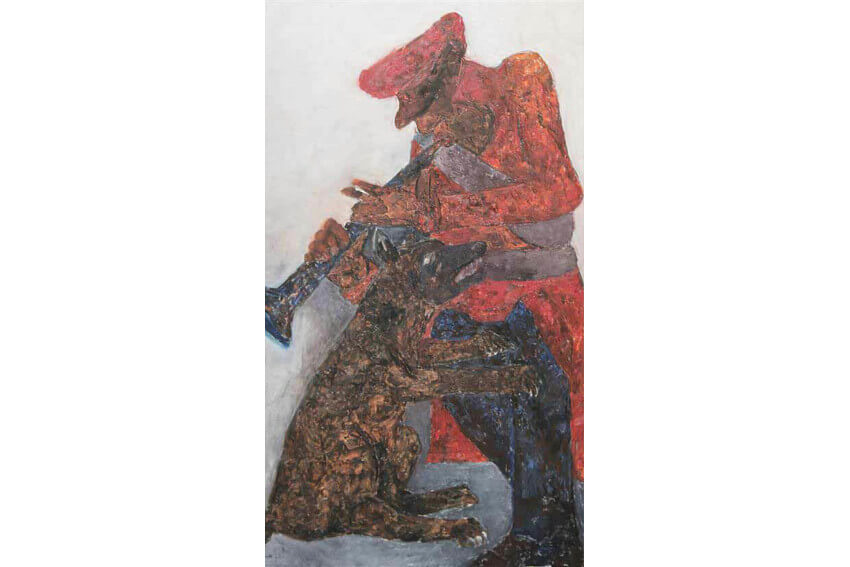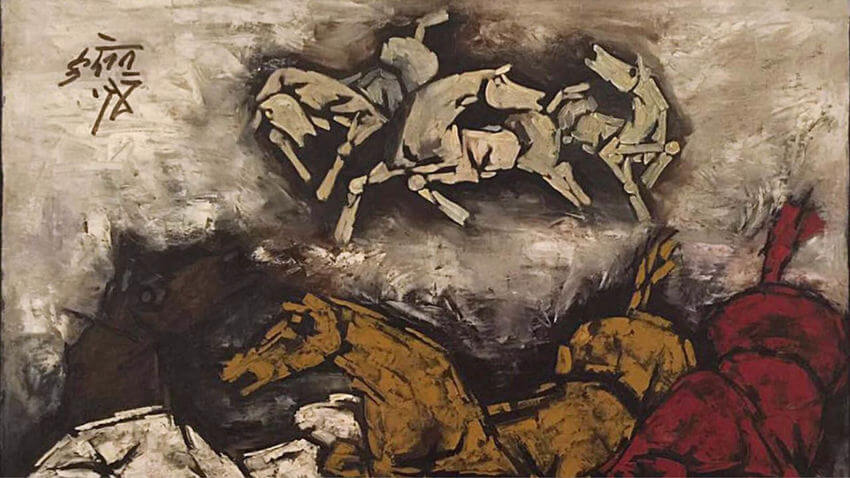In Dubai, A Show Celebrating Masters of Modern Indian Art
An exhibition currently on view in Dubai offers a rare glimpse at some of the major voices of Indian Modern art. It shines a light on a regional history that is vast and complex; one that has sometimes been poorly documented, and is thus still being written. And it shows how there has not, in fact, been one modernist history in India, but rather a multitude of histories. The title of this exhibition, The Singular and The Plural, pays respect to that reality. Many viewers attending this show will come with a pre-existing idea about the nature if Indian art. Mesolithic rock sites indicate that the Indian subcontinent has been populated by humans making art for more than 30,000 years. But the modern nation we call India—the largest democracy in the world, with more population than Europe and the United States combined—only turned 70 last year. Indian Modernism emerged out of a process of self-discovery and experimentation, one which grappled with those well-known ancestral roots, but also dealt with colonial influences, and questions about what the future of Indian art might be. Several Modern Indian art movements are explored in the exhibition, including the Bengal School, the Calcutta Group, and the Progressive Artists Group. Each of these groups pursued a unique aesthetic position. The Singular and The Plural brings them together, along with multiple other Indian modern artists who formulated their own idiosyncratic vision. It presents a compelling statement about the many trajectories these artists carved out in their effort to develop a new Indian visual vocabulary. It shows how they have been influenced by the outside world, and by their own past, while also revealing how they have opened doors to new potentialities through experimentation.
A Culture of Resistance
As one of the most ancient civilizations on earth, India has been subtly influenced by many outside forces over the centuries. Nonetheless, throughout most of history Indian art and culture has developed and maintained a distinct character. But that all started to change in the mid-18th Century, when European colonial power dramatically asserted itself in the region, exerting pressure on all aspects of Indian life, from the food to the architecture to the art. But throughout colonial times, there remained a culture of resistance, which held fast to ancient indigenous traditions. That is where this exhibition begins. It is what was at the heart of the efforts of the Bengal School—a group of artists which, decades before Indian independence, started asking questions about how to express the modern Indian cultural condition.
Their inquiry began with Mughal painting, a type of miniature, figurative art that dates back to just before the days of colonial influence. Artists such as Abanindranath Tagore and Nandlal Bose reclaimed this style of art, and they did so decades before Independence, becoming among the first to reject the Western teachings prevalent in Indian art schools in the early 20th Century. Though it harkened back to the past, their work was avant garde, because it rejected the status quo. They were soon followed by the Calcutta Group, which also embraced the idea of resistance. The artists in this group, such as Nirode Mazumdar and Paritosh Sen, went beyond rejecting European culture, and also rejected religious subject matter and purely figurative imagery. They were widely rejected as scandalous at first, but when Independence came, their influence on Indian Modernism was profound.
 M. F. Husain - Vision for Abu Dhabi Museum, 2008, Acrylic on canvas
M. F. Husain - Vision for Abu Dhabi Museum, 2008, Acrylic on canvas
Visual Experiments
In 1947, the Progressive Artists Group was formed. Based mainly in Bombay, this group absorbed the philosophies of both of their predecessors—embracing Indian history, and also advocating for more aesthetic freedom. But they also opened their minds to exploring the ideas of international artists. The paintings of Ganesh Pyne speak in haunting conversation with Surrealism, although they are distinctively true to Indian culture. The colorful, abstract paintings of S. H. Raza evolved over decades to employ a range of visual languages, from Lyrical Abstraction, to Suprematism to Orphism. Meanwhile, M. F. Husain was clearly influenced by Picasso; Sanat Kar was inspired by Neo-Classicism; and F. N. Souza developed a uniquely expressive variation of Art Brut.
There are several artists in this exhibition, however, that stand apart due to their confident, idiosyncratic visual voices. The abstract and dreamlike colors and shapes in the work of Vasudeo S. Gaitonde are transcendent. The biomorphic abstract compositions of Jeram Patel declare themselves as essentially Indian, yet universally sublime. The fantastical abstract paintings of Krishna Reddy are refreshingly alive, and unlike anything I have seen before. And then there are the colorists: Jagdish Swaminathan, whose whimsical pictures elevate color to heights of ecstasy while soothing the soul with simplicity; and Sohan Qadri, whose intensely dramatic work challenges visual perception.
 Krishen Khanna - Untitled, Oil on canvas, 91 x 61 cm
Krishen Khanna - Untitled, Oil on canvas, 91 x 61 cm
The Myth of Singularity
What is most obvious throughout this show is that there is no such thing as a singular style of Modern Indian art. But then again, there is also not an artist in this exhibition whose work does not in some way, either figuratively, formally or abstractly, engage with the common Indian heritage all of these artists share. Their work is somehow as distinctly Indian as the work of the New York School painters is distinctly American. Or perhaps that is a perception I am putting on the work, that would not be obvious were it not for my preexisting awareness about the focus of the show.
In any case, I feel that this show is a revelation. It dispels notions of ideology, and invites a celebration of openness. It reminds me that singularity in culture is a myth; that there is not one history of India, nor one history of Europe, nor one history of America. Neither is there one history of abstraction, nor one history of Modernism. All history is told in multiples. The Singular and The Plural is on view at 1x1 Gallery, at the Alserkal Avenue arts complex in Dubai, through 28 February 2018.
 M. F. Husain - Untitled, Oil on canvas, 122 x 145 cm, Circa 1970s
M. F. Husain - Untitled, Oil on canvas, 122 x 145 cm, Circa 1970s
Featured image: SH Raza - Bindu,1999, Acrylic on canvas
All images used for illustrative purposes only
By Phillip Barcio






